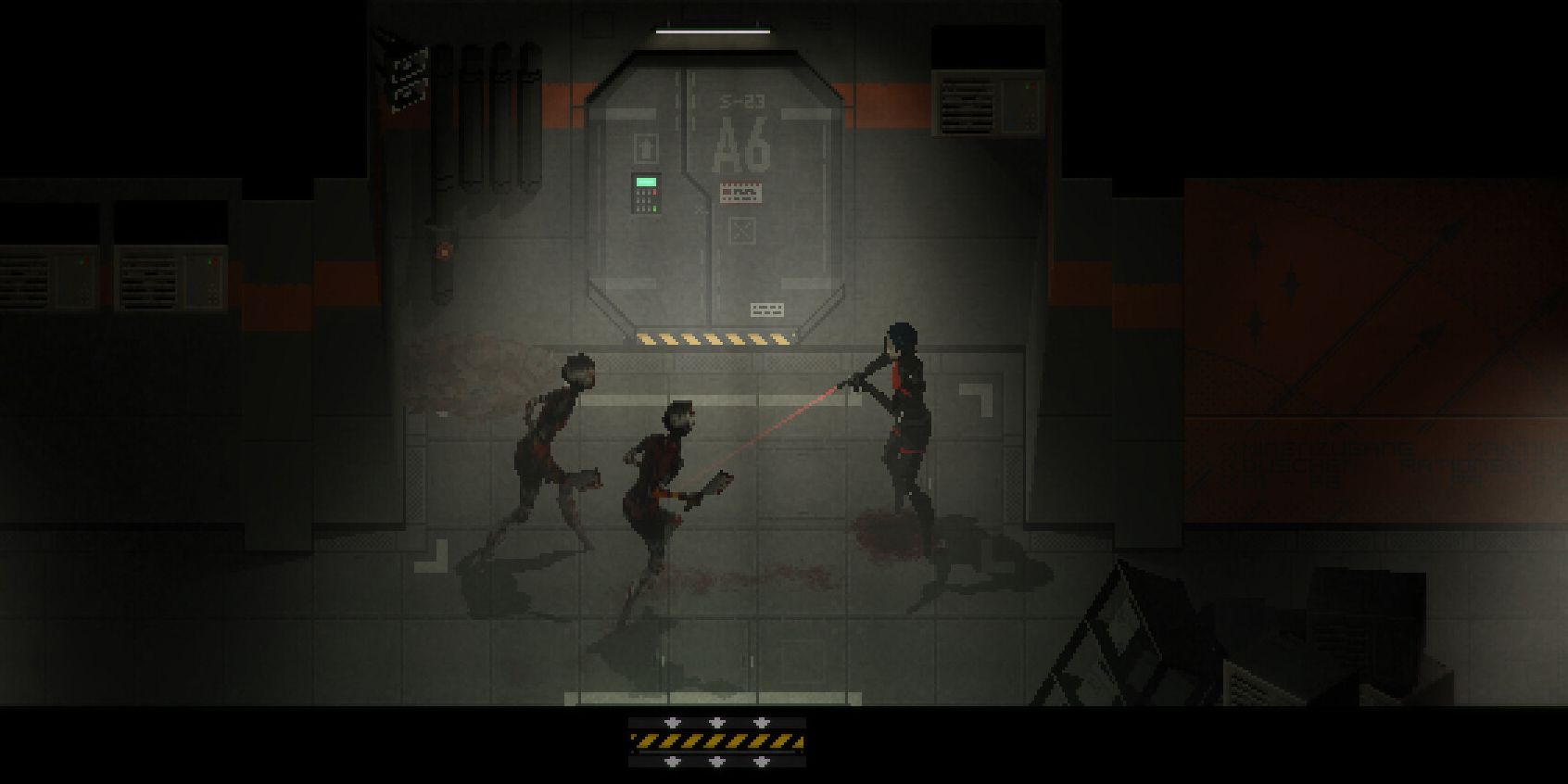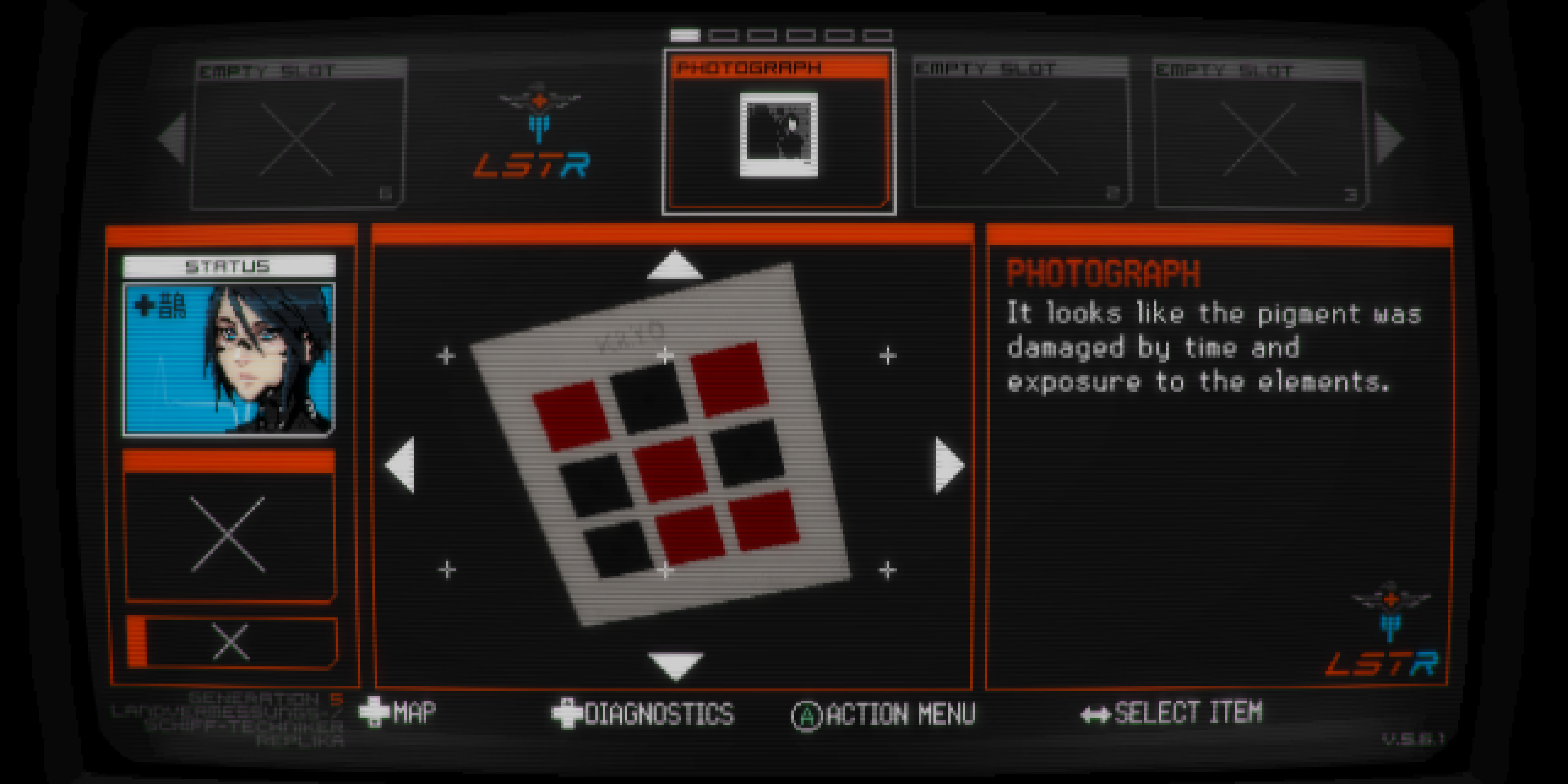Signalis Is More Old-School Than Old-School Survival Horror
I’m deep in the bowels of a space colony that’s been overrun by… something. Survival horror game Signalis doesn’t readily reveal what exactly has gone wrong to make the Replikas–highly advanced androids essentially–turn into shrieking monstrosities trying to tear you (also a Replika) apart. How much of its story you uncover depends on how many of the various logs, diaries and notes lying around you care to pick up and read. It’s all pretty concise and digestible, but even if you choose not to get involved in the lore, Signalis still works very well as a pure old-school survival horror game in which your goal is simply to get the hell out of there alive.
Signalis utilises a lot of things that have waned over the years in the genre: limited inventories, manual-only saving that you can only do in dedicated save rooms, even somewhat tanky shooting mechanics that you don’t really expect to see this side of 2005. In some ways, maybe it’s a little too cloying in its love for Silent Hill, with twitchy monsters, holes you keep jumping into to go deeper into the labyrinth, enigmatic NPCs, and even the ‘fade to red’ when you save the game; but in other ways Signalis goes even further than genre classics like Resident Evil and Silent Hill ever dared.
In particular, Signalis isn’t afraid to impose scarcity upon you. The most tangible example of this is in resources. Having any kind of surplus of ammo is a rarity here, and even though you may be tempted to let the bullets fly into the first corrupted Replika you meet, that attitude won’t sustain you over the long run. Much like the Resident Evils and Silent Hills of old, evasion is better than confrontation. There is limited ammo in the world, and running out of it is a very real possibility, which I started discovering to my detriment by the halfway point in the game.
Signalis in fact goes a step further than its ancestors, because when all else fails you don’t have an infinitely reusable melee weapon to fall back on. There are stun rods, but they’re disposable and quite rare, and the very best you can rely upon when fully out of ammo is to aim your empty pistol, then give a monster a shove when they get too close to you, creating just enough space for you to get away. Where even the classic Resident Evils tended to ramp up the action and weapons at your disposal towards the latter stages of the game, Signalis never gives you such reprieve.
This scarcity stands in contrast to the unpredictable plenitude of the enemy. Enemies don’t respawn exactly; their bodies will lie motionless in the exact same spot you downed them for the remainder of the game. They can, however, come back to life. It’s rare, but that makes it all the more shocking when they do, and the best way to ensure they stay down is to use one of the Thermite sticks (again limited) to burn their bodies.
Inventory is one of the enduring debates of survival-horror, which usually goes something along the lines of: does a constricted inventory make your more mindful about your resource management and heighten the game’s suspense, or is that outweighed by the inevitable pain-in-the-ass backtracking as you have to go deposit your items in the save room storage box before running back to grab the new ones?
Signalis again goes a step further than its ancestors here, for better or worse, with strictly inventory limits and a ton of backtracking (you flat-out just have six inventory slots–less than the original Resident Evil’s 8). There’s not even a compromise where key items don’t take up inventory space or some kind of keychain exists for all those super-slim keycards you pick up to go on, so you just need to find a way to make those six measly slots work. There’s something to be said for a game that makes you mentally map where certain items are so you can go back and grab them, but it definitely does bog things down a bit.
I’ve had several points in the game where I was essentially running around lifeless corpse-strewn corridors between key new items and my storage box, which frankly felt a little archaic; the off-chance that one of the dead monsters I was running over would come back to life was not enough to offset the humdrum back-and-forth sprints. The options to drop items then mark them on the map, or instantly combine items you find with existing ones in your inventory, would’ve felt a bit less clunky, though I can’t help but feel that a game which makes you pause to reload or change weapons is fully invested in said clunkiness.
Where many modern games that evoke older games, such as retro-styled survival horrors or boomer shooters, will deftly disguise modern design ideas to resemble old-school designs, Signalis goes all-in on those old designs, even pushing things like scarcity of resources and inventory space beyond what we saw in those games of yore.
Yes, it does plenty of things that actually are new and novel (like merging first-person exploration sequences into the game), but Signalis is an experience that sometimes teeters on awkwardness and tedium, yet somehow remains satisfying and immersive. I genuinely wonder whether gamers who didn’t play those old-school survival horrors might recoil in disgust at its deliberate awkwawrdness, but to those (like me) who grew up on those games, Signalis feels not just like a nostalgic return to those darkly happy low-poly places, but a game that burrows even deeper into the horror philosophy they espoused.



